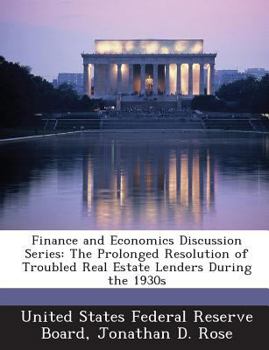Finance and Economics Discussion Series: The Prolonged Resolution of Troubled Real Estate Lenders During the 1930s
This paper studies how building and loan associations (B&Ls) slowly unwound their obligations following a set of financial shocks during the Great Depression, with a special focus on a group of particularly troubled B&Ls in Newark, NJ. Investors in B&Ls disagreed over whether to realize losses on foreclosed real estate holdings, and those investors favoring liquidation were unable to force action after legal developments nullified statutory withdrawal privileges. In the medium run, a market-based resolution mechanism developed in the form of a secondary market for B&L liabilities. Liability holders barred from withdrawal incurred large losses while liquidating their investments on this market. At the same time, B&Ls used the market to avoid realizing some losses by exchanging foreclosed real estate for their second-hand share liabilities. More formal resolution ultimately took place from 1938 to 1943, first consisting heavily of closures, and then of reorganizations. Reorganizations were spurred by a large scale federal intervention arranging for the creation of bad banks, liquidity injections, and liability insurance.
Format:Paperback
Language:English
ISBN:1288698135
ISBN13:9781288698134
Release Date:February 2013
Publisher:Bibliogov
Length:54 Pages
Weight:0.25 lbs.
Dimensions:0.1" x 7.4" x 9.7"
Customer Reviews
0 rating





